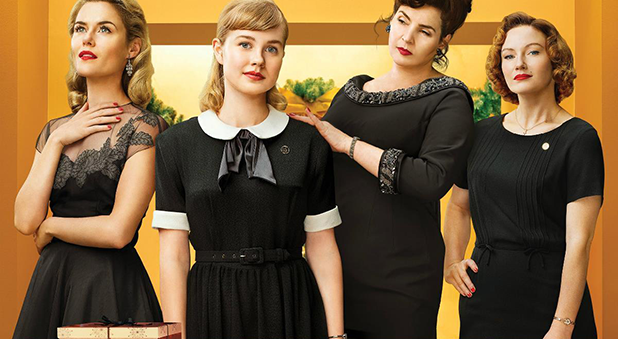Ladies in Black
Rated PG
It’s rare to be able to say a film is utterly charming, but Ladies in Black claims that title from the outset.
As the female staff of Goode’s department store prepare for their day – slipping on stockings, checking hairdos and buckling up stylish heels – director Bruce Beresford begins to draw you back in time. Slowly, deliberately and without fuss, this simple scene begins our journey in Sydney, 1959.
The women stream out onto the shop floor, the floor manager checks his pocket watch while the staff pianist sits, fingers poised above the keys. When the manager nods, the doorman sweeps open the store and shoppers enter to the genteel welcome of Chopin. Ah, there’s no other store like David Jones… I mean, Goode’s. And you settle back with a real sense of anticipation of the enjoyment to come.
This is a meat-and-three-veg era, when the migrants were from post-war Europe (where’s Asia?) and something as simple as salami was viewed with suspicion. The men went out to work and the wives stayed at home – or if they did work, they definitely cooked the dinner – and innocence or ignorance was such that if your GP spoke (awkwardly) about “relations” with your husband, you probably didn’t know what he meant.
Everyone seems posh and assured at Goode’s, so Christmas holiday casual Lisa (Angourie Rice) is wide-eyed and nervous as she joins the team in ladies’ wear. The more experienced hands expect her to flounder but, with a little encouragement from sophisticated “reffo” Magda (Julia Ormond), 16-year-old Lisa begins to find her place, and dreams of buying the prettiest dress in the evening gown section.
A thoroughly Aussie story
Based on the bestselling book by Madeleine St John, Ladies in Black is a thoroughly Aussie story – which is a refreshing change – and although the title might suggest it’s just for women, the story has much broader appeal than that. Bruce Beresford has wanted to make this film for years, and I’m glad he’s finally succeeded. We are the beneficiaries of his enthusiasm.
Bit by bit, we’re taken into the lives of the characters onscreen, learning a little about their past, their dreams, their disappointments and their problems – a disappearing husband among them.
You half expect huge shocks or dramatic crises around every corner (is that what modern films have done to us?) but this doesn’t happen. Often, little is said at the most revealing moments; rather, we are carefully shown a character’s contentment and hope, confusion and loneliness.
Change in the air
We’re on the cusp of the 1960s, change is in the air and a lot of Sydneysiders aren’t ready for it, but the way this is presented is simple and effective, without predictability and with a good deal of humour.
There can’t help but be some subtext about migrants, given the gaping wound of offshore detention in modern Australia. Today’s Iraqi and Syrian refugees are 1959’s “reffos”, with their different languages, cuisines and stories of hardship, yet there’s no moaning or political tub-thumping – we just see their gratitude for the freedoms and fresh start their new country has given them.
Lisa makes friends with Magda and her husband, enjoys literary discussions with their friends, and continues to blossom. At home, she is close to her mum (Susie Porter), and kindly tries to work with the young-girl clothes that are still being made for her. Dad (Shane Jacobson) is a bluff, old-fashioned bloke who loves beer and the ponies, and can’t get his head around Lisa’s desire for a university education.
It seems almost incredible that the Sydney portrayed in Ladies in Black is only 60 years old. It’s another world – yet the storyline makes it familiar to us, and while technology helps bring the era back to life, it’s the script and excellent performances that give it value and make it the best Australian movie I’ve seen for some time.
After all, friendship, discovery, love, growing up and growing old are timeless. The world of Ladies in Black is one you will find a delight to visit.
















